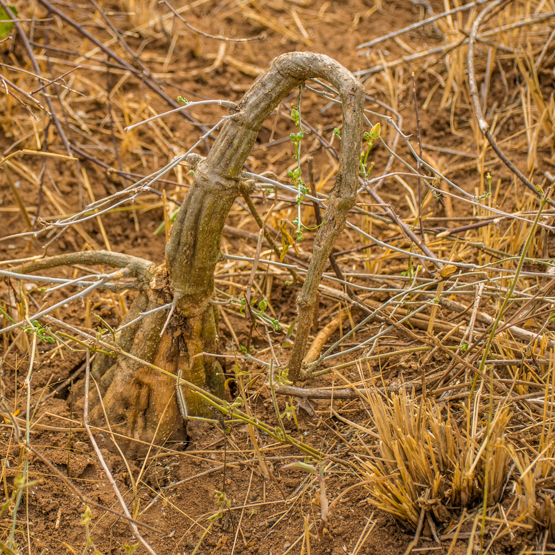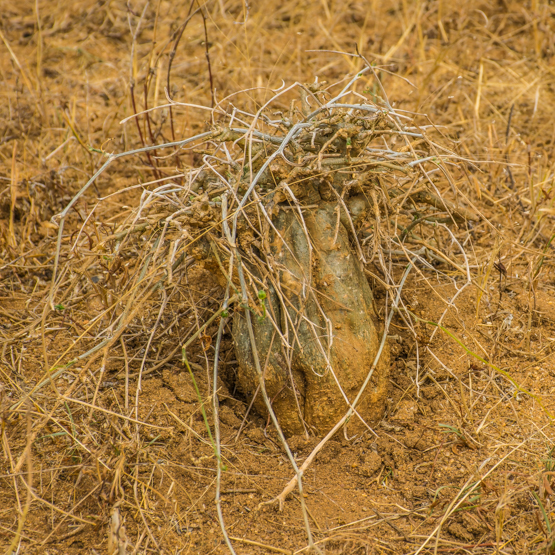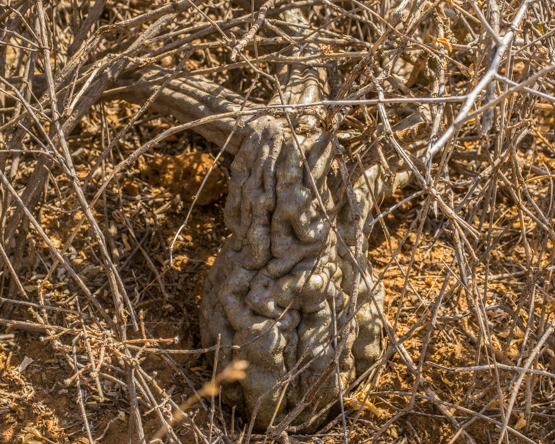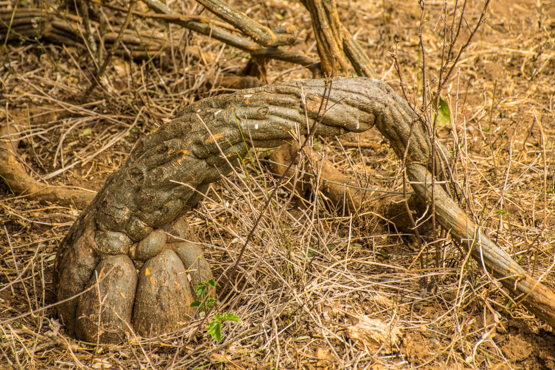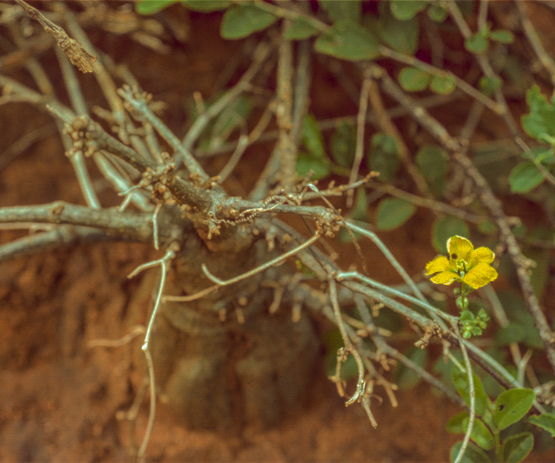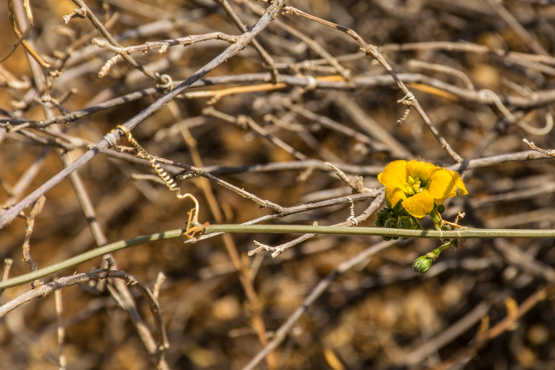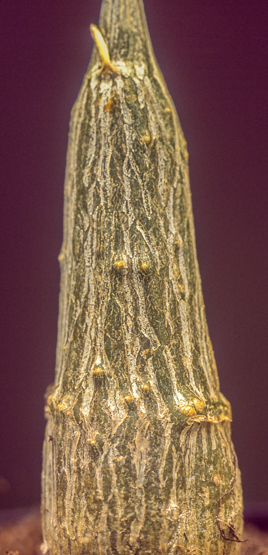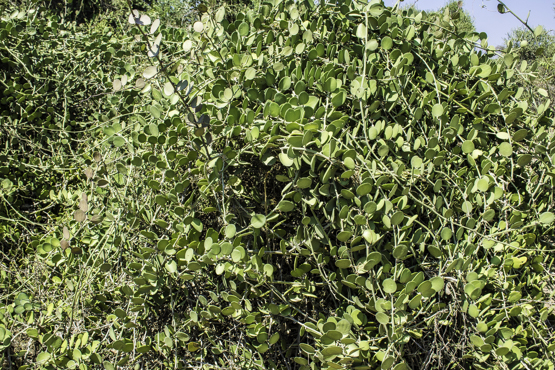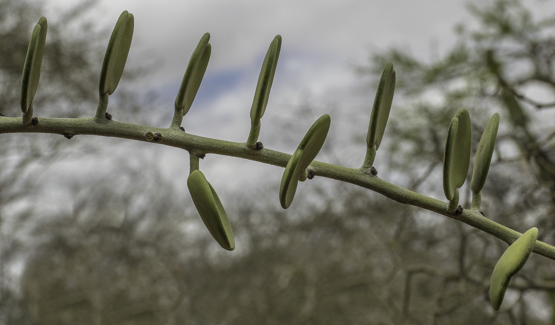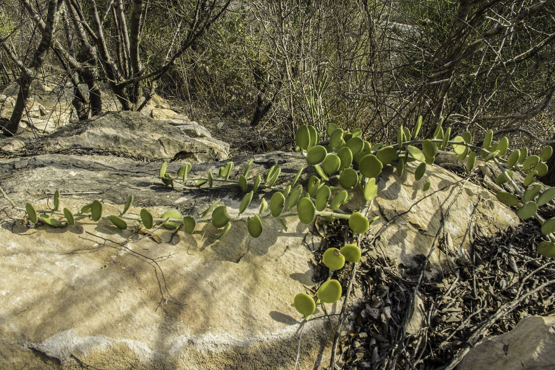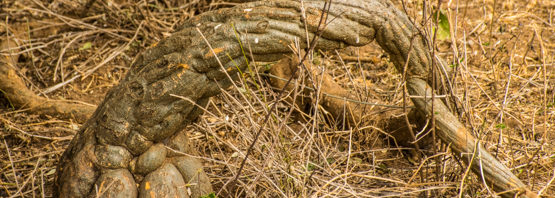Of the about 900 species of the Pumpkin Family (Cucurbitaceae), nearly 10% can be classified as a caudiciform succulent. The subject of this post is a clear example.
It is a climber with a tuberous rootstock 15-20 cm across, which is visible above ground and tapers into the stems which may be up to 7 m long.
Young stems are green and soft, soon becoming dark green, grey or brownish and somewhat woody.
The plants are dioecious (either male or female) and produce egg-shaped
fruits which are bright red, up to 7 x 3 cm and beaked (=rostrata).
The species occurs in deciduous bushland, thicket , woodland and wooded grassland from sea level to 1650 m in tropical East Africa: southern Ethiopia and the adjacent part of Somalia, northeastern Uganda, Kenya, northern and central Tanzania.
The pictures were taken in Kenya and northern Tanzania, except for the last one, which shows a young plant in cultivation.
